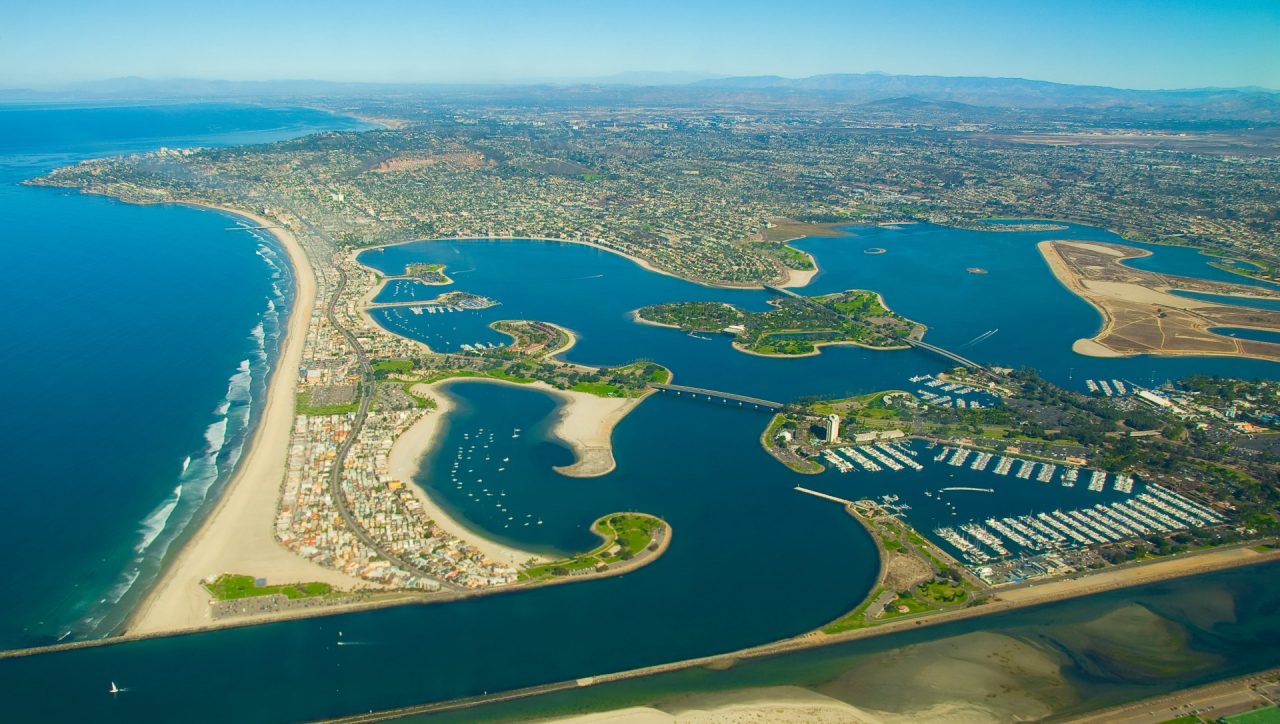Maybe it’s the surfers at Pacific Beach, or strolls along the Coronado Peninsula. Or it could be the nightclubs of Pacific Beach. For all of these reasons, San Diego is seen as a relaxation paradise, with a mild climate all year round, a swarm of attractions (from Seaworld to the San Diego Zoo) that have made it the capital of entertainment, and a lifestyle marked by tranquility and pleasure. Yet, despite the postcard-perfect image in the collective imagination, San Diego is, after Los Angeles, California’s second-largest city in terms of population, and the eighth-largest in the United States. The city is rich in museums, universities, but also in modern infrastructures ranging from the International Airport — the busiest single-runway airport in the U.S. — to the many routes and interstates, and a public transport network where streetcars, trains, buses and boats transport millions of people.
That’s why in August this growing city launched the largest infrastructure project in its history: a complex water treatment plant that will give the city “local water independence,” thus countering the effects of drought caused by climate change.
Pure Water: ready for construction
The name itself says it all: “Pure Water,” the multi-billion-dollar project designed to guarantee San Diego’s water supply, has reached a turning point after years of analysis and debate. The project is complex, because it involves the construction of a $356 million wastewater treatment plant to be built on the west side of Miramar; building a $123 million network of pipes that will transport wastewater on a journey from Clairmont to the plant; and a $110 million pumping station on Morena Boulevard that will make it all possible.
According to the plan, the first phase of the work is expected to be completed in 2025, when the plant will be able to produce 34 million gallons (1.28 million litres) worth of drinking water per day. The second phase — which will require further investment – is expected to be completed in 2035 ensuring an extra 53 million gallons (200 million litres) per day of production.
The goal is to allow San Diego to “produce” its own water, no longer importing it as it does today. Currently 85% of the drinking water consumed in San Diego is purchased, a percentage that will drop to 50% when the city is equipped with its own treatment plant.
“Pure Water is the largest, most ambitious infrastructure project in our city’s entire history. This is a big deal, everybody,” said Mayor Todd Gloria on the day of the announcement.
When construction is completed in 2035, the total cost of the project is expected to reach $5 billion, $733 million of which will be covered by federal funds, with the rest coming from the state of California and the city of San Diego.
“Climate stress is often experienced as water stress, something California knows all too well. That’s why we’re prioritising investments in innovative projects like Pure Water San Diego, which will improve the city’s resilience to climate change impacts, protect water quality and support the local economy by creating jobs,” said Michael Regan, head of the U.S. Environmental Protection Agency at the announcement event.

A beneficial impact on the environment and the economy
The process that led to the approval of this ambitious project has been long and complex, also because some portions of the construction works have been met with resistance from residents, especially of the people who live in the vicinity of the places chosen as plant sites.
However, at the political level the mayor has managed to win bipartisan support, focusing on the beneficial effects that the project will have on the city. The first, of course, is the increased ability to protect the water supply from the effects of droughts. Beyond that, however, “Pure Water” will have an impact on both sustainability and the city’s economy.
In terms of sustainability, the wastewater treatment will significantly reduce the amount of wastewater currently being spilled into the ocean from San Diego’s Point Loma Wastewater Treatment Plant. Prior to “Pure Water,” San Diego recycled just 8% of its wastewater, a small percentage, plus the fact that treated water could only be used for irrigation and not for drinking.
The water coming to San Diego will also support the city’s economic growth. During the construction phases, 4,800 workers will be employed. Secondly, the direct benefits that residents and businesses will be receive from a city freed from the nightmare of being without water.

